Jade Cove California: Jade Hunting at the Beach in Big Sur!
Jade Cove, located in Big Sur, California, is a famous and remote destination for jade hunting enthusiasts. The area is well-known for its abundance of the highly sought-after Big Sur jade.
Collecting jade on the beach is a popular activity for both locals and tourists alike, offering an exciting and rewarding experience as they search for these stunning gemstones.
What Makes Jade Cove Unique?
Jade Cove is home to one of the largest deposits of nephrite jade in North America, and the largest underwater concentration in the world.
The rugged coastline, with its dramatic cliffs and crashing waves, creates the perfect environment for jade formation.
The constant crashing of waves against the cliffs leads to erosion, releasing jade stones and pebbles that have been embedded in the soil for thousands of years.
These treasures originate from an ancient seabed situated nearly 200 feet above sea level.
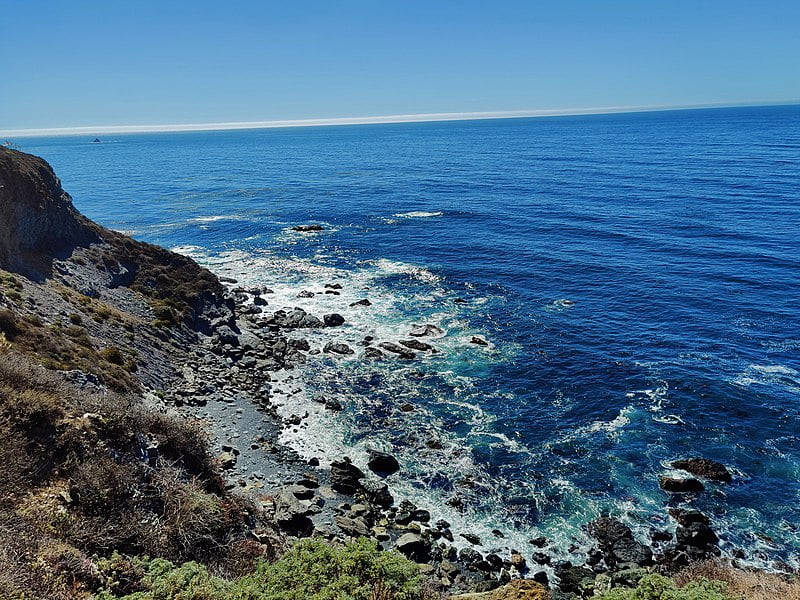
The jade is then polished and smoothed by the ocean before being deposited onto the beach.
This natural process makes jade cove California crystals highly prized among collectors and jade enthusiasts. It also makes it one of the most sought after types of jade in California.
How Do You Get To Jade Cove?
Jade Cove, nestled between the coastal towns of San Simeon and Carmel, is situated 30 miles to the north of San Simeon and 60 miles to the south of Carmel.
Reaching Jade Cove can be a challenging adventure due to its remote location and the rugged nature of the Big Sur coastline.
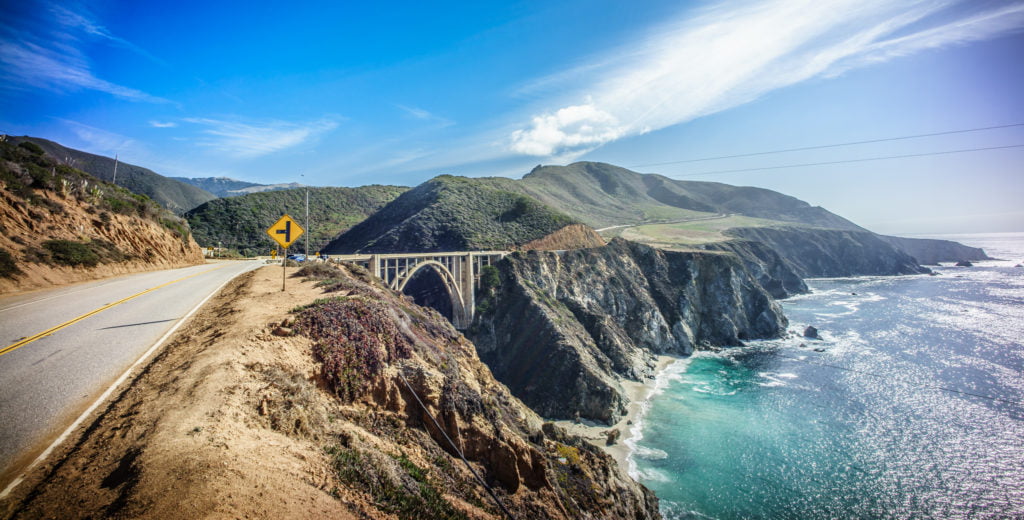
Accessing the cove involves driving along the scenic Highway 1, a scenic route that runs along the Pacific Coast.
However, visitors should be aware that the road is susceptible to coastal erosion, wildfires, and landslides, which can lead to frequent road closures and sections of the highway falling into the ocean.
This area is very remote, and the highway is the only road in or out of the surrounding coastline!
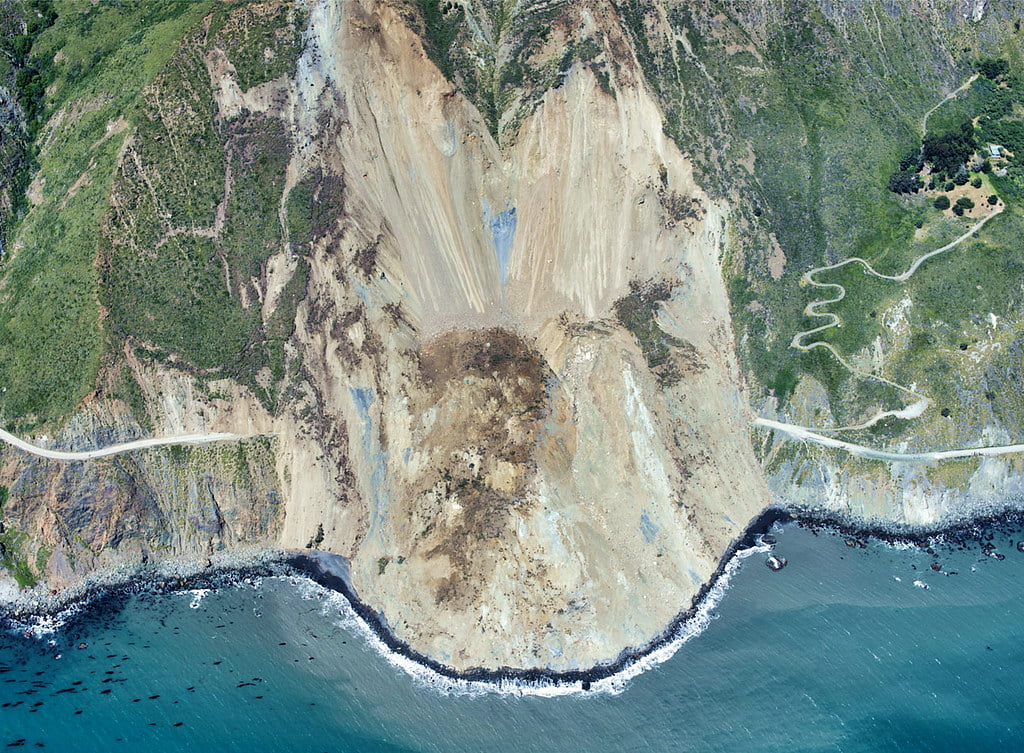
Despite these challenges, the journey to Jade Cove offers breathtaking views and a sense of exploration, making it a memorable experience for those who venture to this unique location.
Jade Cove Trail
Getting down to Jade Cove requires a steep and sometimes slippery descent.
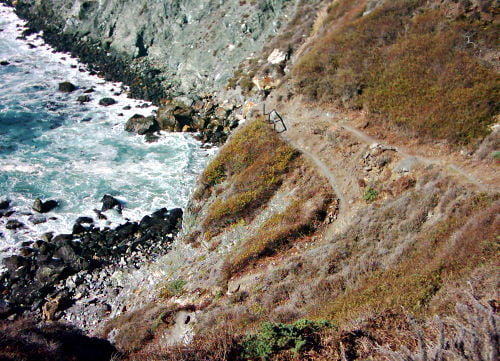
The trail to access the cove starts at the pullout parking area along Highway 1.
Follow the trail down the cliffside, taking extra caution as the path can be quite narrow and steep in certain sections.
Wear sturdy shoes with good grip to help navigate the uneven terrain safely.
How to Identify Jade on The Beach
Jade hunting in Big Sur Jade Cove can be both challenging and rewarding.
The best time to search for jade is during low tide, as the receding water exposes the hidden treasures that lie beneath the waves.
Jade is easier to identify while it is wet. As it dries it will become dull due to a layer of salt covering it from the ocean. You may notice veteran jade hunters licking rocks, or rubbing it on their noses to transfer oil onto the stone from their skin, which can help to show the natural beauty of the stone.
It’s essential to keep an eye on the tide and weather conditions, as the coastline can be treacherous, and safety should always be a top priority. Be safe, and never turn your back to the ocean!
When searching for jade, it’s helpful to know what to look for.
Jade stones can vary in size and shape, from small pebbles to large boulders. The color can also range from deep green to light green, blue, black, or can even be the coveted red vulcan jade.
Keep an eye out for the unique sheen and smooth texture that jade possesses, as these characteristics can help you identify jade from other rocks.
Jade Cove California Mining Regulations
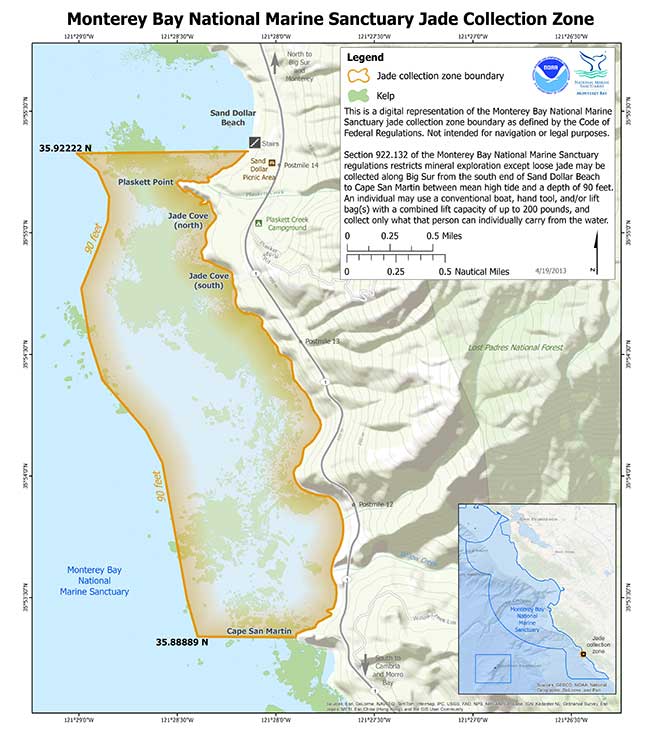
While jade hunting is a popular activity at Jade Cove, it’s essential to be aware of the local regulations and restrictions.
Jade Cove California mining is allowed, but there are limitations on the amount of jade that can be collected.
Each person is allowed to take only as much jade as they can individually carry. The use of tools is strictly regulated.
Tools that can be used must not be mechanical (no drills or saws!), and can be no longer than 36 inches long. The most common tools used are hand shovels to dig in the rocks. Small ‘crowbars’ like a screwdriver are also used to get jade out of hard to reach places.
You can collect jade in the intertidal zone, essentially where the ocean wave can hit.
It is illegal to dig for jade in the cliffs, due to coastal erosion.
It’s crucial to respect these regulations. They help to preserve the area’s natural beauty and ensure that jade hunting remains a sustainable activity.
Frequently Asked Questions
Where does Big Sur Jade come from?
Big Sur Jade originates from the serpentine rock formations found in the area surrounding Jade Cove.
Erosion caused by the pounding waves against the cliffs helps release jade stones and pebbles. They are then polished and smoothed by the ocean before being deposited on the beach.
This is where jade is found and collected by jade hunters.
Can you collect jade at Jade Cove?
Yes, you can collect jade at Jade Cove, with certain restrictions.
Each person is allowed to collect only what they can individually carry out, and can only be collected with hand tools, such as prybars, no longer than 36 inches in length.
Can you find jade in the ocean?
Yes, jade can be found in the ocean along the Big Sur coastline, particularly on any of the beaches surrounding Jade Cove.
The ocean plays a crucial role in the formation and exposure of jade, as the waves polish and smooth the stones before depositing them on the beach.
Other Activities and Attractions Near Jade Cove
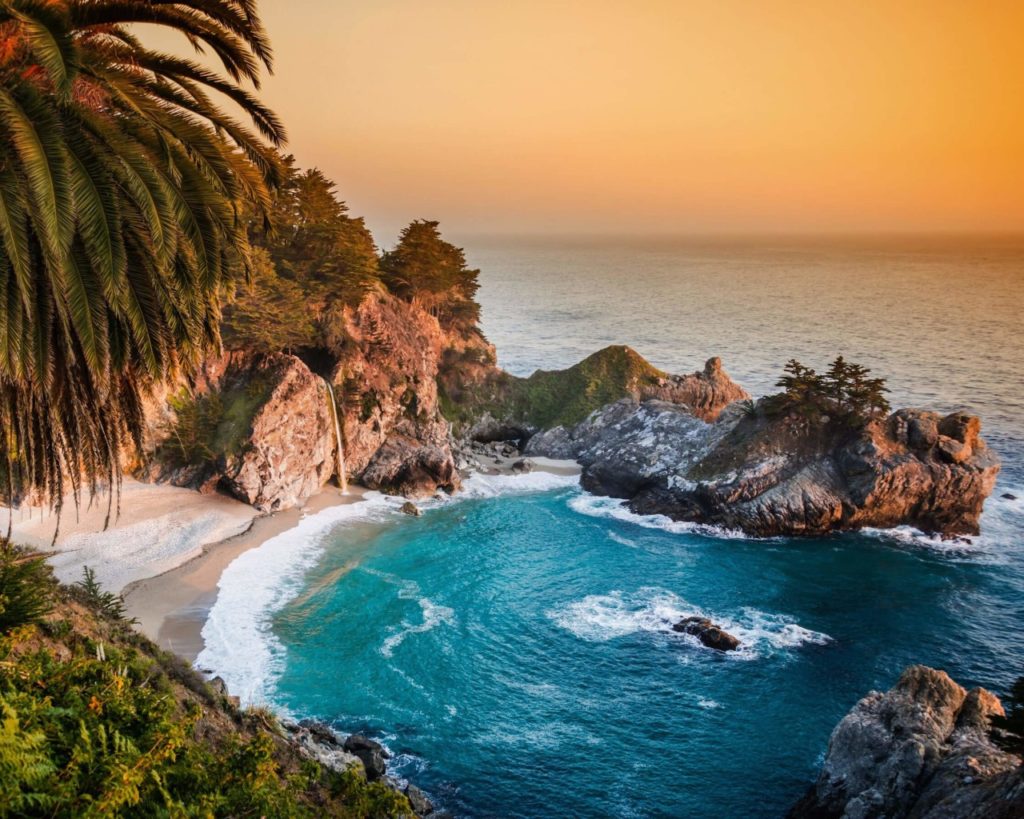
McWay Falls, at Julia Pfeiffer Burns State park, is a popular tourist destination located between Big Sur and Jade Cove.
Besides jade hunting, there are plenty of other activities and attractions to enjoy in the Big Sur area.
Hiking, wildlife watching, and photography are popular pastimes, with numerous trails and scenic overlooks offering stunning views of the coastline.
Some notable spots include Julia Pfeiffer Burns State Park, McWay Falls, and Bixby Creek Bridge.
Where to Stay and Eat in Big Sur
When planning your jade hunting trip to Jade Cove, it’s essential to consider accommodations and dining options in the area.
Big Sur offers a range of lodging options, from campgrounds and rustic cabins to more upscale accommodations. Some popular options include Limekiln State Park, Plaskett Creek Campground, Lucia, and the luxurious Treebones Resort.
When it comes to dining, options are very limited near Jade Cove. Big Sur, 35 miles north of Jade cove, has many more options. Casual eateries like Big Sur Taphouse and Big Sur River Inn Restaurant are very popular. There are also upscale options. These include Sierra Mar at the Post Ranch Inn and Nepenthe.


